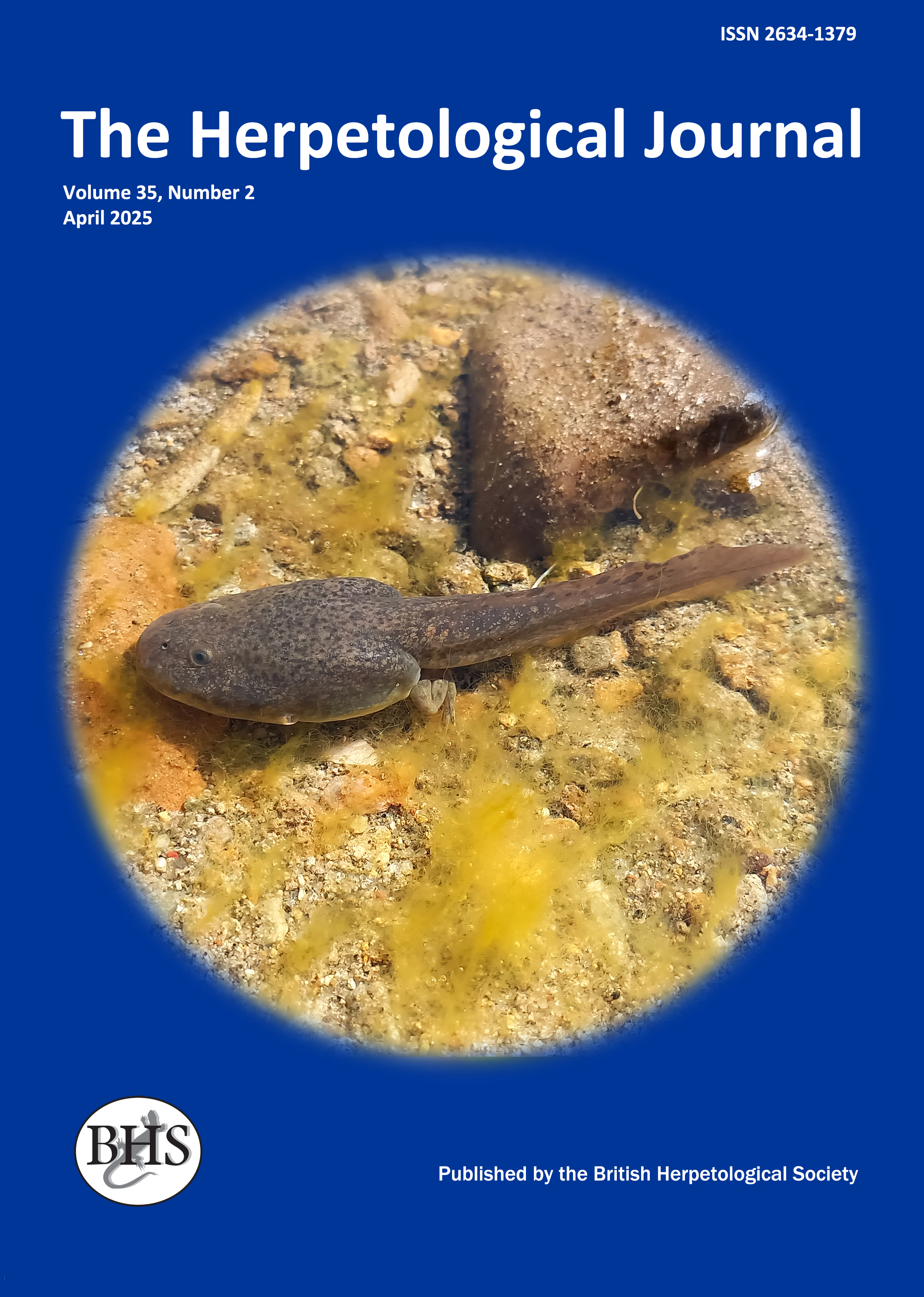
The Herpetological Journal
The Herpetological Journal is the Society's prestigious quarterly scientific journal. Articles are listed in Biological Abstracts, Current Awareness in Biological Sciences,Current Contents, Science Citation Index, and Zoological Record.
ISSN 0268-0130
2021 Impact Factor from Clarivate for the Herpetological Journal is 1.194, an increase of 0.332 from 2020.
pdf 06. Ecology of the colubrid snake Pseudablabes agassizii in south-eastern South America
1976 downloads
Open Access
pp. 37-45
Authors: Marques, Otavio A. V.; Sawaya, Ricardo J.; Stender-Oliveira, Fernanda & Franca, Frederico G. R.
Abstract: The colubrid Pseudablabes agassizii is a small philodryadine snake distributed in open areas in south-eastern South America. We provide information on morphology, habitat use, diel activity, diet, feeding behaviour, reproduction, and seasonal activity of this species, based on dissection of 146 specimens combined with field and captive observations. Pseudablabes agassizii is smaller than any other species in the Philodryadini. Females attain larger body size than males. Sexual dimorphism was also recorded for stoutness and tail length, but not for head length. Apparently, P. agassizii forages during the day, mainly for resting spiders in subterranean and other day-time retreats. Lycosid and other araneomorph spiders were the staple food item, but mygalomorph spiders, scorpions, and orthopteran insects were also eaten. Large spiders were subdued by venom injection, whereas smaller ones were usually swallowed alive. Ingestion of lizards is infrequent and probably represents a vestigial trait. Absence of sexual dimorphism in relative head length may be related to ingestion of small prey. The reproductive cycle of females seems to be highly seasonal with vitellogenesis occurring from the onset to the middle of the rainy season, when females are more active. Recruitment of newborns takes place at the end of the rainy season. Males show increase in testes volume in the second half of the rainy season, and mating probably occurs at the end of rainy season, when adult males are more active. At least in south-eastern Brazil, P. agassizii is a habitat specialist, sensitive to habitat alteration, and thus is an indicator species of environmental quality. Due to the rapid destruction of its main habitat, the Cerrado, the conservation status of this snake should be regarded as threatened.
Keywords: FEEDING, ACTIVITY, MORPHOLOGY, REPRODUCTION, PHILODRYADINI

